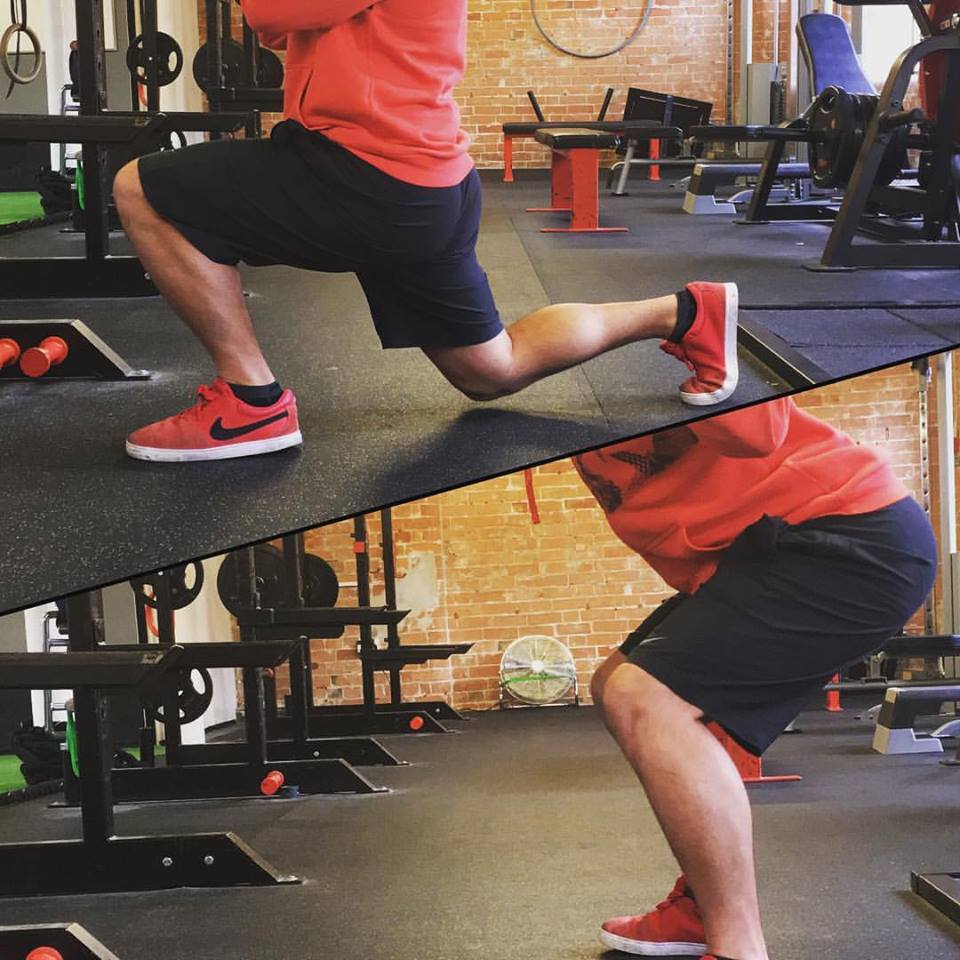BACK SQUATS
They’re such a powerful exercise that it could be classed as the ‘king’ of exercise.
That depends…
There are many factors that contribute to a good (or bad) back squat.
Mobility and stability throughout the chain, which many people lack in certain areas, are vital to a back squat.
If the squat feels wrong, painful or uncomfortable – DON’T DO IT! Work on single leg squat and lunge variations to provide more than enough stimulus to get the legs working!
Take a look at this image

If your squat range is like the bottom picture , you need to stop squatting right now.
You most probably are doing more harm than good.
Our suggest would be to work more on single leg exercises until you are able to reach below 90 degrees.
Squats are part of compound movements, which means that it is an exercise that work multiple muscle groups at the same time.
Squats may look like a simple movement but this exercise targets several muscle groups: thighs, hips and buttocks, quads and hamstrings. It also strengthens one’s’ bones and ligaments. Not only that, because it targets these muscle groups, it strengthens your lower body—the part, which is widely responsible for keeping a person upright and moving.
Squats are the highlights of every leg day. And Leg days are the most dreaded days at the gym. It’s understandable, though. I mean, you can barely walk for days after a good leg day. That pain, however, is just a small price to pay for the benefits that you will get from back squats.
What are the benefits of a back squat?
- It strengthens your lower body like your legs and glutes and tightens your thighs, hips and buttocks.
- A strong lower body will not only make you look good physically, it will also improve your overall fitness. A lot of daily activities are reliant on the strength that comes from your lower body
- Back squats improve one’s mobility. You get to move around and support your entire body because it strengthens your lower body.
- It boosts your metabolism. Squats are considered strength training that helps build and maintain muscle mass.
Leg muscles are also the biggest muscle group in the body. When you do squats, your body seems to work harder during these sessions and more energy is needed to work up that metabolic rate, which eventually leads to the body burning more calories.
- It strengthens your bones and joints. We do know the importance of protecting your bones at all cost. Bones and joints slowly deteriorate as we get older. In order to prevent any damage, you have to continually train them so they will always stay strong.
Despite its many benefits, squats remain one of the dreaded exercises at the gym.
Squats, however, are one of those exercises that people usually performed incorrectly.
The only way to get the full benefits of a squat is by doing it the right way. The very first thing and probably one of the most important things to understand about squats is that it doesn’t have to be fancy. You just need to know the basics and master them.
What are the things to remember in order to perform back squats the right way?
- Know the basics. You may be doing 20 reps in 15 seconds and feel like you are the most badass ‘squatter’ in the gym. But unknowingly you are doing it all wrong so it still doesn’t matter if you did 50 because it will only lead time wasted and worse, injuries.
Mastering the exercise correctly will allow you to reap all the benefits of a back squat. Doing it 10 times the right way is way better than doing what resembles as a squat 50 times.
- Secondly, always make sure you stretch those legs after an intense session. When your muscles
- Thirdly, if you feel pain and if it feels uncomfortable, STOP RIGHT AWAY. Forcing it might lead to injuries. You can also ask experts on how you can do other variations to this exercise, which you can customise based on your limitations.
How to Back Squat Correctly
- Make sure that you stand on balanced stance. Ideally, your feet should be shoulder-width distance apart and that they should be parallel to each other. Sometimes, it helps if your toes are slightly pointed outwards.
- Use your core. Engage your core as it helps stabilize you. You can flex your abs as of preparing to get punched.
- Roll your shoulders up and back, look straight ahead and look tall as if an invisible thread is holding your head up.
- Do a sitting-down-on-a-couch movement. To do this properly, act as if you are about to sit down with your butt backwards leading the way down, followed by bending your knees.
- With the bending of the knees, make sure that you do not overdo it. Your knees shouldn’t go over your toes. Make sure that your bent knees are aligned with your toes.
One of the most common mistakes when doing a squat is letting the knees do all the hard work. This will lead to more injuries. Let the buttocks lead the way until you have reached the floor or below 90 degrees.
- Whilst your butt is still out, make sure that you keep your upper body straight at all times by looking straight ahead and NOT rounding our backs.
- Go down slowly without weights first and try to feel if you start to feel tension in your glutes, thighs and hamstrings, then you are doing it right. If you start feeling comfortable, then you can start adding weights.
The other common mistakes that one encounters when trying out a squat apart from letting the knees do the heavy load are hunched backs and lifting one’s feet off the floor.
You may look at these following images. Look at yourself in the mirror and if your squats look like those in the bottom photos, you have to stop squatting because you might injure yourself.
If the full squats seem to be too much for you, there are several squat variations that you would want to try.
You can check out these alternatives in this video. You can try them our until you have become more confident and comfortable doing the full poses.
Remember to always look up, butt out, knees aligned with toes and keep those feet planted on the ground.
Take a look at this video for some alternatives .
Pain when squatting? Give these single leg exercises a go as an alternative to squatting!3×10 reps each leg each exercise!
Posted by rb5 on Monday, March 12, 2018
